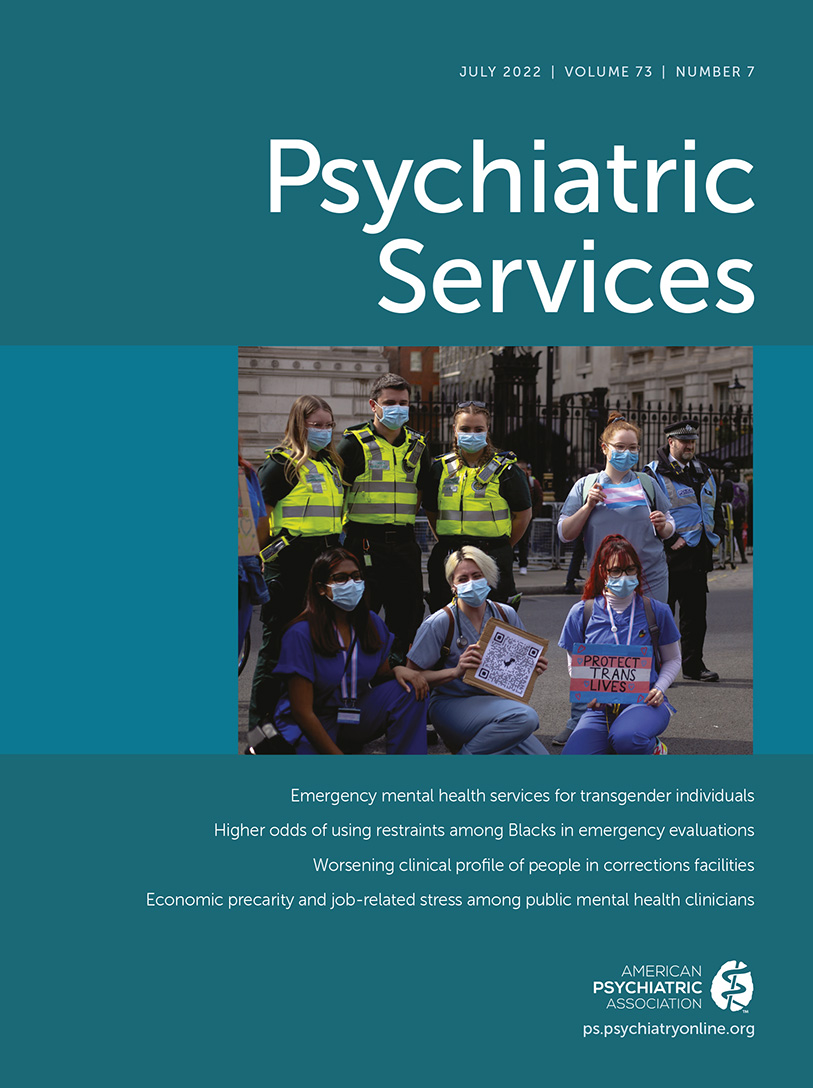The Rising Toll of Public Mental Health Work
Severe mental health workforce shortages and high rates of health care worker burnout have been highlighted as key priority areas to address the U.S. national mental health crisis. Briana S. Last and colleagues (1) present timely findings that underscore the urgency of these priorities. The authors elucidate several facets of the emotional and financial strain experienced by public mental health workers in Philadelphia and demonstrate an inverse association between level of education debt and frequency of evidence-based intervention (EBI) delivery. These findings are alarming but not surprising based on our frontline experience providing clinical care and training in multidisciplinary public mental health settings. Consistent with this study’s findings, we have found that low compensation, high workload driven by volume-based payer incentives, and constant exposure to psychosocially complex and chronically traumatized populations are the ingredients for burnout and high turnover. Despite the best efforts of frontline clinicians and local behavioral health and payer authorities such as those in Philadelphia, these forces can become unsurmountable barriers to sustained uptake of EBIs in settings where they are most needed.
Most clinicians in this study needed to work an additional job to supplement their income and carried significant education debt. The authors rightly highlight the crippling effect of low Medicaid reimbursement rates and fee-for-service (FFS) payment models on financial stability and ability to provide appropriate compensation in public mental health settings. Further, FFS financially incentivizes and rewards volume, potentially sacrificing quality. Continuously embedding an EBI can require both initial short-term training/supervision and longer-term, “refresher” venues for training, particularly with staff turnover. In overburdened and understaffed public FFS settings, consistently protecting clinician time for training in EBI is hardly feasible; these tasks compete with the pressure to generate billable encounters. Time and volume demands are uniquely burdensome in public settings because clinicians are charged with applying EBIs from research study conditions to complex populations with multiple comorbid clinical and psychosocial issues. When system financial constraints limit case management access, patients often look to clinicians to assist, further absorbing clinical time. These conditions make the consistent delivery of EBI impossible.
Higher rates of reimbursement, increased use of episode-of-care payments with appropriate rates, and increased use of value- and performance-based payment rewarding evidence-based care are critically needed to increase the financial ability of public mental health systems to properly compensate their staff and align payment incentives with delivery of EBI. In addition to these system-level solutions, we applaud Ms. Last and colleagues for suggesting how increased financial resources could be prioritized to directly benefit individual clinicians. We underscore Last and colleagues’ suggestions of compensated ongoing consultation in EBI on the job and wage incentives for use of EBI. Well-intentioned efforts to implement new clinical interventions often do not account for the extra time and energy clinicians require to learn and effectively use these strategies.
When a precarious personal financial situation combines with the volume-focused pressure of FFS and the complex conditions of patients in public mental health settings, seeing clinicians experience burnout and secondary stress response is not surprising. High rates of secondary traumatic stress, burnout, and posttraumatic stress disorder in the study’s sample are particularly alarming when coupled with clinician-reported difficulties in affording mental health care. Staff burnout and resultant turnover complicate the ability of public mental health systems to provide consistent long-term provider-patient relationships and care, whether evidence based or not. Beyond the authors’ suggestions of increased peer and supervisory support, benefits covering mental health care and robust employee assistance programs with trauma-informed resources should be considered a mandatory part of trauma-focused EBI intervention, just as is training in the intervention itself. The increased move toward hiring independent contractors removes critical mental health supports for employees.
Despite the passion and dedication of frontline public mental health workers, the current financial and emotional toll of their work settings not only stymies sustained uptake of EBI but also threatens the sustainability of this work as a long-term career path. Without significant investment in the financial and emotional well-being of this workforce, we fear a continued migration of talented public mental health clinicians to the private sector.
1 : Economic precarity, financial strain, and job-related stress among philadelphia’s public mental health clinicians. Psychiatr Serv 2022; 73:774–786Link, Google Scholar



